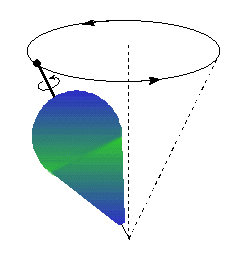
Sumatra Quake Rattled Earth's Orbit


LOS ANGELES — Sunday's earthquake that unleashed deadly tsunami on Asia
was so powerful it made the Earth wobble on its axis and permanently
altered the regional map, U.S. geophysicists said Wednesday.
The 9-magnitude temblor that struck 250 kilometers southeast of Sumatra may have moved small islands as much as 20
meters, according to one expert.
"That earthquake has changed the map," said U.S. Geological Survey
expert Ken Hudnut.
"Based on seismic modeling, some of the smaller islands off the
southwest coast of Sumatra may have moved to the southwest by about 20
meters. That is a lot of slip."
The northwestern tip of the Indonesian territory of Sumatra may also
have shifted to the southwest by around 36 meters, Hudnut said.
In addition, the energy released as the two sides of the undersea fault
slipped against each other made the Earth wobble on its axis, Hudnut
said.
"We can detect very slight motions of the Earth and I would expect that
the Earth wobbled in its orbit when the earthquake occurred due the
massive amount of energy exerted and the sudden shift in mass," Hudnut
said.
Another USGS research geophysicist agreed that the Earth would have got
a "little jog," and that the islands off Sumatra would have been moved
by the quake.
However, Stuart Sipkin, of the USGS National Earthquake Information
Center in Golden Colorado, said it was more likely that the islands off
Sumatra had risen higher out of the sea than they had moved laterally.
"In in this case, the Indian plate dived below the Burma plate, causing
uplift, so most of the motion to the islands would have been vertical,
not horizontal." (Wire reports)
3 Earthquake Paths to
Earth's Descruction
There are actually three different ways in which a sudden change in the
behaviour of the Earth's axis could cause planet wide destruction.
Apart from the collision of the Earth with another large body *, there
is nothing in conventional physics to make us think that any of them is
possible. (* In which case an axial shift would be the least of our
worries).
1.The tilt of the Earth's axis (currently at an angle of 23.5 degrees
to the plane of Earth's orbit ) suddenly becoming more perpendicular or
horizontal would cause widespread devastation. Loose things on the
planet's surface such as the atmosphere, the oceans and even the plates
of the crust would initially continue to try spinning around the
position of the previous axial tilt due to the physics of inertia.
There would be horrendous winds, tsunami, earthquakes and volcanic
eruptions beyond our worst nightmares.
(B) The position of the Earth's axis of rotation through the planet
suddenly changes - in other words the North and South poles are
suddenly shifted to different spots on the Earth's surface. This would
cause planet wide devastation for the same reasons of inertia in (A).
(C) The Earth's axis suddenly develops a wobble. In fact it already
does have a wobble called precession that takes 26,000 years to
complete. This is far too gradual for the inertial effects on the
atmosphere, oceans and crust to be noticeable. However, if it was
speeded up 26,000 times then that would be a different story.
There is a similar, "New Age", disaster theory that seems to propose
that the Earth's crust occasionally decides to rotate in a different
direction to the rest of the planet regardless of a stable axial
rotation- but this strange idea is not relevant to TEM's theory.
Lloyd Stewart
Carpenter
Ocean
Science and Maps Researcher
The man who
discovered the amazing images
on our planet
dedicated to a marriage of science, philosphy and religion

Lloyd Stewart Carpenter has been guest on
more than
450 talk Radio and
Television shows
throughout the
United States and Europe.
The book
Ocean Floor Mysteries
The Amazing Mystery of the Great
FACE
on the
PACIFIC
OCEAN FLOOR
++++++++++++++++++++++++++++++++++++++++++++++++++++++++++++++++++++++++++++++++++++++++++++++++++++++++++++++===
Return to 777 News





